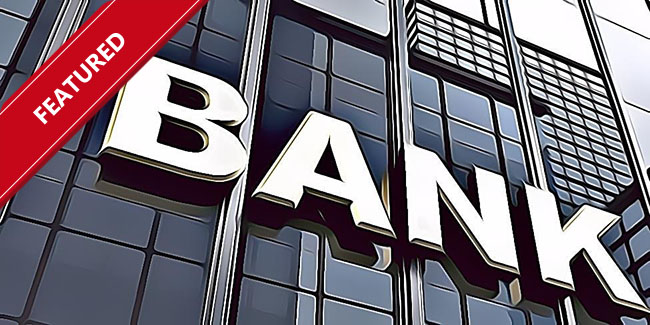- Telecommunications Giant Vodafone Leaves the Libra Association
- Group of Central Banks Assesses Developing Central Bank Digital Currencies
- South Korea Might Impose 20 Percent Tax on Cryptocurrency Profits
- Report: Terrorists Increasingly Use Crypto to Raise Funds Anonymously
- Canadian Securities Administrators Subject Crypto Exchanges to Securities Laws
Featured: Big Banks and Cryptocurrencies – Asking Turkeys to Vote for Christmas?

We are now a decade on from the creation of Bitcoin and much has changed in the world of crypto. Since Bitcoin’s creation, new cryptocurrencies have been popping up all the time, claiming to offer something new that other cryptocurrencies can’t offer. As of mid-August 2018, there were 1,600 cryptocurrencies available over the internet and the number continues to grow. Crypto innovation is booming.
With this surge of crypto innovation, digital assets have been pushed into the public conscious and people are much more willing to accept them than they were when Bitcoin was initially created. It’s no longer unusual to see an online business accepting payment in Bitcoin.
But what do the banks think of all this? The answer mostly varies between banks who want to capitalize on the trend and banks who want nothing to do with digital assets and are hoping they will fade into obscurity. To understand why, we need to take a look at the reasons a bank may feel threatened by cryptocurrency.
Cryptocurrencies are (mostly) decentralized, meaning there is no one trusted actor within the system but rather trust is validated without the need for a third party. This differs from traditional banks where fiat currency is controlled by a centralized government – this means the currency can be regulated and affected by a third party. So with crypto, you can exchange value quickly from peer to peer without the involvement of a bank. This is, of course, not a get prospect to the banking system who play a major role in all traditional transactions.
In 2015, French bank BNP Paribas said that if blockchain technology is applied to securities trading then “existing industry players might be redundant.” If one of France’s major banks is threatened, then you can bet this is true for a significant part of the banking industry.
Cryptocurrency is filling a gap in the industry that traditional banks failed to fill themselves. It can be argued that the traditional banking industry failed to resolve some of the issues that cryptocurrency has solved for people. Up until crypto came along, there was little pressure for the banks to solve these problems; after all, it’s not like people were going to stop using money, was it? Many people believe the banks just got complacent. Let us look at some of the areas the crypto model beats the banks.
Worldwide access
As of June 2018, 3.2 billion people or 55.1% of the world’s population has internet access. This is more people than have access to a traditional exchange; meaning that in countries with poor infrastructure, highly fluctuating currency and problems accessing banks, people can transfer value instantly to others. It doesn’t matter where you are in the world, you can transfer Bitcoin or another crypto to someone else’s wallet in a flash without having to go through a bank.
Poverty
Adding to the previous point – crypto has the ability to help people in poverty in a way traditional banks haven’t been able to. There are a few inventions in human history that have greatly improved our life expectancy: vaccination, farming, germ theory, the industrial revolution, and the internet. Could cryptocurrency be the industrial revolution of finance? We’re not saying it is, but it’s possible.
People in poverty-stricken countries with highly unstable currencies can hold their money in cryptocurrency as a way to protect it from the government. We have seen this happen over and over. In 2016 1 in 3 Kenyans held a Bitcoin wallet. Similarly, people in Venezuela are keeping their money in crypto wallets and only transferring it back when they need to make essential purchases. If people in the developing world are choosing crypto at larger proportions than in the developed world, then it is clear it is having a huge effect on helping poverty.
Transaction Fees
Credit cards and banks charge transaction fees that can range anywhere from 0.5 to 5%. Cryptocurrencies, by contrast, tend to have extremely low transaction fees if they exist at all; meaning, the user can save money by going through the crypto route. Banks often also add on more transaction fees for anything out of the norm – for example, if you are sending money internationally or if you are using your card abroad.
Identity Theft
Credit card transactions use a “pull” method to get paid. If we look at Visa, for example, the transaction will usually involve four parties: the merchant, the acquirer, the issuer and the cardholder. This means that you are granting the merchant access to your full credit line each time you pay for something. Cryptocurrency works on a “push” method, similar to wire transfer, where payment is pushed from one party to another. With crypto is it not necessary to give up your credit line plus your personal information such as name and address to make a payment – you can remain relatively anonymous.
Ultimate Control
Even if you don’t feel like it, under the current system you are at the mercy of the banking institutions. If PayPal decides to lock your account for whatever reason, you can’t access your funds and that is it. In order to gain access, you need to jump through whatever hoops they have in place and hope that the issue is resolved in your favor. With cryptocurrency, your wallet is always yours and there is no institution who will restrict your access to it, the only way to lose access is if you lose the key to your wallet.
Central banks are currently the dominant party and they won’t give up their power without a fight. Although cryptocurrencies are becoming more popular, they are not yet in danger of making banks redundant since governments are still hesitant to accept crypto. Asking the banks to support cryptocurrency is like asking Turkeys to vote for Christmas – it’s not going to happen.
Several banks have banned cryptocurrency purchases, the majority of these banks lie within the US. Other financial companies have banned crypto payments, such as PayPal. In February 2018 it was reported that Polish Central Bank was secretly funding anti-cryptocurrency YouTube propaganda videos. In 2017, both China and Vietnam banned citizens from trading in crypto and blocked crypto exchanges.
Around 69.2 percent of banks in the US have imposed regulations on cryptocurrencies, making it difficult for people to use them in conjunction with traditional banking. As time goes on banks for going one of two ways - fiercely imposing restrictions on crypto, or making moves to accept it in certain situations. The majority of these regulation attempts have occurred in the last 3 or 4 years, before then the banks mostly viewed crypto as a fad that would eventually die out.
However, it is now becoming clear that crypto likely isn’t just a fad. As such, some banks are showing support for crypto, USAA, Simple Bank and Goldman Sachs being among them. This highlights an import aspect of emerging technologies – either you catch up or you’re left behind. Some banks are working with cryptocurrencies presumably because if they are part of the industry they will have some ability to shape it and also have a headstart on other banks if crypto does take off the way many people think it will.
Digital favorites
- Siti Di Scommesse
- Casino Bonus Senza Deposito Immediato
- Best Casinos Not On Gamstop
- Casinos Not On Gamstop
- UK Casinos Not On Gamstop
- Non Gamstop Casinos
- UK Casinos Not On Gamstop
- Casino Not On Gamstop
- Non Gamstop Casino
- Slots Not On Gamstop
- Gambling Sites Not On Gamstop
- オンライン カジノ おすすめ
- Gambling Sites Not On Gamstop
- Non Gamstop UK Casinos
- UK Casino Sites Not On Gamstop
- UK Casinos Not On Gamstop
- Non Gamstop Casinos UK
- Non Gamstop Casino Sites UK
- Best Slot Sites
- UK Online Casinos Not On Gamstop
- Best Non Gamstop Casino
- Best Sports Betting Sites Not On Gamstop





